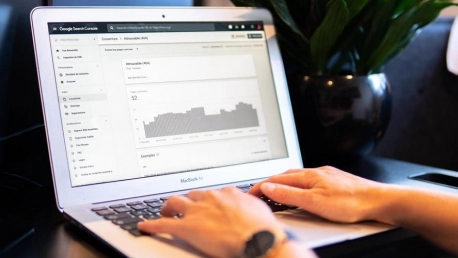Search Engine Optimization (SEO) is beginning to sound like a cliche in the digital marketing world. However, it is not.
A shocking statistic shows that only 0.78% of Google searchers click on results from the 2nd page. That means optimizing your website and content to reach the top of the search engine results page (SERP) should be a priority for your digital marketing practices.
In this article, we’ll tackle seven key strategies for improving the effectiveness of your SEO process so that you can improve your rankings and your online visibility.
What does an SEO strategy consist of?
An SEO strategy involves a series of steps that optimize your website’s content in order to improve the likelihood of it appearing in the top search results. With the help of an SEO strategy, you maximize your chances of gaining organic traffic from search engines.
When creating content for your website, it’s essential to stay on track and ensure that you keep your content delivery relevant for your audience. That’s why having an SEO strategy in place allows you to create content that people are actively searching for.
“If You’re Going to Post Content on Your Site Anyway, You Might as Well Take the Time to Make Sure Google Takes Notice of Your Effort.” – The Content Factory
In other words, a content-centric approach that actually takes into account what users are interested in will revamp your digital marketing efforts.
How to plan an effective SEO strategy
Step 1. Decide on your topics
Until recently, keywords were the first step to achieving organic traffic growth. As the digital marketing landscape is changing, topics are becoming more relevant at this point. Identify the topics you’d want your content to focus on by thinking of some of the key terms associated with your product.
Associate these topics with short-tail keywords by using an SEO tool that helps with this kind of research and you’ll have the primary support for a larger cluster of long-tail keywords.
Step 2. Optimize your pages for specific keywords
Using the same keyword tool, identify your most essential long-tail keywords—this will help you to dig deeper into the original topic keyword. This specific use of words will support your blog posts or web pages to be ranked higher by search engine algorithms. At this point, you’re already starting to address the specific needs of your audience and attract more conversions.
Step 3. Create a blog
This might sound obsolete, but blogs can be an effective way to engage your audience. They represent additional opportunities to improve your SERPs rankings and build your brand’s reputation.
SEO-optimized blog posts should not include long-tail keywords more than four times and they should always link out to the pillar page. In this way, you’re giving search engines precious information regarding your content and how it can be linked to different algorithms.
Step 4. Measure your content’s success
Metrics are so valuable because they provide useful information regarding how your content is doing and where should you focus your efforts to improve it. Since SEO is an arduous process, you’ll want to know what works and what doesn’t. Identifying areas of improvement with the use of a web analytics tool will help you become better at meeting the needs of your customers.
“If You Don’t Know the User Intent Behind the Keywords You’re Optimizing for Then You’re Doing It Wrong. Also, If You Are Optimizing for Keywords vs the Needs of the User Then You’re Doing It Wrong.” – Jordan Kasteler
Conclusion
Remember, 68% of online experiences begin with a search engine. Although ranking high in search pages can be challenging, it gets better in time. As you become more experienced with SEO and more aware of your users’ demands, you can plan smarter and improve your SEO strategies for greater marketing success.









